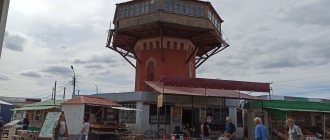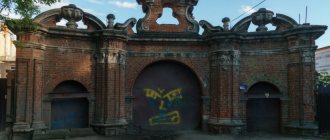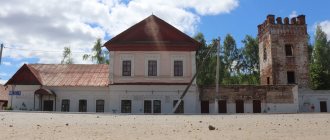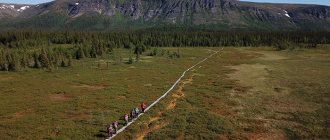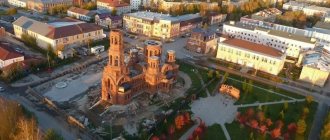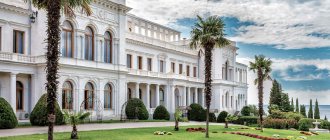There are 86 regions in our huge country, and each of them has its own digital designation on the license plate. Of course, it is quite difficult to remember them all, and when you encounter the next value, it is not possible to find out which subject of the Russian Federation this car came from. You will find a detailed answer on this page.
Most registration plates are standard plates of the 1993 model, the type of which is determined by GOST R 50577-93 (Order No. 362 of July 30, 1993 on new state registration plates of vehicles).
Initially, only numbers from 01 to 89 were used as region codes, according to the number of regions of the Russian Federation as of January 1, 1993. However, the number of registered cars increases every year, and license plates with valid combinations are beginning to be scarce. For this reason, a number of Russian regions have introduced additional codes that can be used on signs; First, the issuance of region codes from 90 to 99 began (except for code 92, which was subsequently used in Sevastopol), and then they switched to three-digit region codes. For three-digit codes, at first it was allowed to use only one as the first digit, from 2013 - 1 and 7, and from the summer of 2022 - any digit other than zero.
Try your luck:
Click on the handle and try to get a nice number =)
O777OO
AVEKMNORSTUKHAVEKANORSTUKHAVEKMNORSTUKHKMNORSTUKHKMNORSTUKHKMNORSTUKH 1234567890123456189012345678901234567890789078907890 12345678901234561890123 456789012345678907890012345 12345678901234561890123456789012345678901234567890 AVEKMNORSTUKHAVEKANORSTUKHAVEKMNORSTUKHAVEKMNORSTUKHVEKMNORSTUKH AVEKM NORSTUKHAVEKANORSTUKHAVEKMNORSTUKHAVEKMNORSTUKHVEKMNORSTUKH
71
RUS
WOW! The probability of getting such a number is 1 in 14400!! You're lucky! Take a screenshot and post it in the comments!
Information
The region includes 103 municipalities, 19 municipal districts, 23 urban-type settlements and 54 rural settlements. The area of Tula is 1495.6 sq.m., density is 368.8 people per 1 sq.m.
A large number of enterprises of the chemical and metallurgical industry are concentrated here: Machine-Building, OJSC Tula Cartridge, Chamber of Commerce and Industry of the Federal State Unitary Enterprise State Scientific and Production Enterprise Basalt, OJSC Tulachermet and a number of other large factories. This is one of the most developed industrial regions of the Central Federal District. The city's environmental problems are associated with the high density of industrial enterprises.
The newspaper Arguments and Facts provided data on emissions of pollutants into the atmosphere. Industrial enterprises emitted 106.63 thousand tons into the atmosphere in 2022, an increase of 2.5% compared to 2022. The most harmful emissions (59.2%) were recorded in Tula. Some enterprises dump production waste into the river.
The region ranks 32nd in terms of living standards in the Russian Federation. The growth of household incomes is projected to be higher than the average for the Central Federal District due to economic growth and increased investment.
A few more facts about the Tula region:
- It borders on the Moscow, Ryazan, Lipetsk, Oryol and Kaluga regions.
- The region was heavily damaged by radioactive fallout due to the accident that occurred at the Chernobyl nuclear power plant and many lands became unsuitable for agriculture.
- The smallest city in Russia, Chekalin, is located in the Tula region.
- The first Eternal Flame in the USSR was lit in the village of Pervomaisky, Shchekinsky district, Tula region.
- Lev Nikolaevich Tolstoy was born and lived in the Yasnaya Polyana estate, near Tula.
Go to the full catalog of Region Codes >>>
TULA
TULA, city in Russia, adm. center of the Tula region and mountains districts. Us. 487.8 thousand people (2015). Located on the river. Upa. Junction of railways and roads.
The city originally emerged in the 12th century. 17 km from the center of modern. city (now the settlement of Old Tula near the village of Torhovo; the settlement is on the site of the Vyatichi settlement of the 9th–10th centuries). The settlement (110×75 m) is surrounded by a rampart and a moat; among the finds are spurs from the 15th century, book clasps, and a crossbow gear. Probably, the mention of T. under 1146 in the Nikon Chronicle ser. 16th century (a number of historians consider this a late insertion into the text of the protograph). It was part of the Chernigov principality, located at strategically important fords across the Tulitsa and Sinetulitsa rivers on the way from the steppe to the North-East. Rus' (Muravsky Way). All R. 13th century T. fell under the rule of the khans of the Golden Horde. According to V.L. Egorov, in the 14th century. was the personal possession of Taidula, the wife of Khan Uzbek. In the agreement (2.8.1381) led. book Vladimirsky and Moscow. book Dmitry Ivanovich Donskoy with lead. book Ryazan Oleg Ivanovich is mentioned as the possession of Moscow. princes. After Tokhtamysh's raid in 1382 or in 1385 (in exchange for captured Kolomna) it was transferred to the Ryazan principality. Probably under contract. book Ryazansky Ivan Fedorovich and led. book Lithuanian Vytautas 1427 went to Vel. Prince of Lithuania, by 1434 she was again in the sphere of influence of the leader. princes of Ryazan. In the 2nd half. 15th century finally came under the authority of the leader. princes of Moscow. A tree was laid in 1508/09. fortress.
In the 1st quarter 16th century the city was moved to the present day. place. In 1514–20 ital. craftsmen built a stone Kremlin. T. became the center of defense of the south. borders Rus. state, a large regiment of the Ukrainian (2nd half of the 16th century) and Bolshoi (1st half of the 17th century) ranks were based here; the Tula governors were entrusted with the leadership of the one created in the middle. 16th century A large serif (see Art. Serifs). 21–23.6.1552 withstood the siege of the troops of the Crimean Khan Devlet-Girey I. In the 2nd half. 16th century Zemlyanoy City was built around the Kremlin in the 1590s. ramparts from the north and south (“Zavitai”) connected it with the abatis. In the 16th–18th centuries. a major center of pottery production (about 100 forges from the Goncharnaya Sloboda have been excavated). In 1595, by decree of Tsar Fyodor Ivanovich, the Kuznetskaya (Armory) settlement was formed in T. from craftsmen who made their own hands. From the end 16th century (especially from the late 17th – early 18th centuries) T. is one of the largest centers in Russia for the production of metal products and weapons. During the Time of Troubles in June 1605, False Dmitry I was in T., in June - Oct. 1607 defended against governments. The rebel troops will not conclude. stage of the Bolotnikov uprising 1606–07. In 1632 - 1st quarter. 18th century Gorodishchensky factories operated near T. In the last third 17 – 1st floor. 18th centuries a number of people from the Armory Sloboda of T. became organizers of the growth. ironworker industry in the Urals and in the Center. Russia and the largest factory owners (among them are the Demidovs, Batashevs, Mosolovs). From last Thursday 17th century center for the production of Tula gingerbread (mentioned since 1685). All R. 1690s N.D. Demidov founded the Demidov Tula plant. In 1712, by decree of Tsar Peter I, the first state government in Russia was founded. Tula arms factory. The district (from 1708) and provincial (1719–77) city of Mosk. lips Center of the Tula province (1777–1929; until 1796 Tula governorship). One of the largest industrial and shopping centers Center. Russia. Since 1778 ch. center for the production of samovars, since the 1830s. – Tula harmonica. Traffic on the railways passing through the railway is open. lines Serpukhov - Tula (1867), Tula - Kursk (1868), Vyazma - Pavelets and Protopopovo - Tula (both 1874), Tula - Likhvin (1905).
Sov. power was established on December 7(20), 1917. In Civil. war 1917–22 T. – Ch. weapons production base for the Red Army. District (since 1929) and district (1929–30) center of Moscow. region (1929–37). Since 1937 the center of the Tula region. In 1940, permanent railway traffic was opened. line Tula - Sukhinichi. During the Battle of Moscow 1941–42 the city was besieged by Germany. troops, was bombed by Germany. Air Force, but was not captured. Hero City (1976). Center of the mountains districts (since 2014).
Tula. View of the Kremlin. Photo by I. Garbuzov / garbuzov-photo.ru
The old part of the city is built up primarily. according to a radial semicircular layout [plans of 1779, with the participation of architect. Andrey V. Kvasov (see Kvasov); 1824, architect. V.I. Geste] with a rectangular Kremlin on the left bank of the Upa. On the territory of the Kremlin there is a 4-pillar, 5-domed Assumption Cathedral (1762–64; paintings - 1765–66, Yaroslavl masters Soplyakovs, Ikonnikovs, Gorins, under the direction of A. A. Shustov), connected by a passage with a bell tower (1772–76; destroyed in the 1930s, restored in 2012–14), Epiphany Cathedral in the Russian-Byzantine style (1855–62). Nearby - formerly. Assumption Women's Monastery (mentioned since 1649; closed in 1921) from Preobrazhenskaya Church. (ca. 1835–42, architect V.F. Fedoseev) and the Assumption Cathedral in the Russian style (1899–1902, architect E.V. Skavronsky).
Tula. Nikolo-Zaretsky Church. 1730–34. Photo by A. V. Pechka
Numerous have survived. temples: on the left bank of the Upa - the Church of the Annunciation (1692), the Vladimir Icon of the Mother of God (1705–12), the Prophet Elijah (1739–1760), St. Nicholas on Rzhavets (1749–70), the Intercession (1765), the Cathedral of All Saints (1773 –76, built in 1788–97, architect K. S. Sokolnikov; bell tower – 1833–63, architect V. F. Fedoseev), Church of Saints Florus and Laurus (1772–96; bell tower - 1830), rotundal of the Apostles Peter and Pavel (1833–36, Fedoseev); neo-gothic Church of the Apostles Peter and Paul (1894–1896, architect E. V. Skavronsky). On the right bank of the Upa: baroque churches - Nikolo-Zaretskaya (1730–34, rebuilt in the 1770–80s; bell tower 18th century), Nativity of Christ (1732), Descent of the Holy Spirit on the Apostles (1757–69), Ascension (1754–87); Nativity of the Virgin Mary (1789–92), Spasskaya (1807), St. Sergius of Radonezh (1896–98), Old Believer Annunciation Church. in neo-Russian style (1912–14). In the northeast of the city is the Shcheglovsky Holy Mother of God Monastery. (1868, closed in 1921, revived in 1991; Cathedral of the Icon of the Mother of God “Mammal,” 1860–64, architect A. G. Bocharnikov; Church of St. Nikandra, 1886–89). To the north outskirts - Mother of God of the Nativity women's monastery. in Gorelki (2000; Church of the Nativity of the Virgin, 1781).
Buildings 18 – beginning 20th centuries: Armory yard (1712–18, rebuilt in 1786–87 and 1835–43), residential buildings of the 3rd quarter. 18 – 1st floor. 19 centuries), etc. Among other buildings: the Hammer and Sickle Palace of Culture (1929) and the Metalworkers' Club [1930, architect. I. A. Golosov (see Golosov)] in the style of constructivism. According to the general plan of 1971, the square was created. Lenin with the House of Soviets (1975–83). Monuments to: A. S. Pushkin (1899), Peter I (1912, both by sculptor R. R. Bach), S. I. Mosin (1958, sculptor V. I. Mukhina), V. V. Veresaev (1958) , L.N. Tolstoy (1973), etc.
Tula Regional Philharmonic. The building of the former Noble Club (1911–12, architect I. A. Ivanov-Shits).
Among scientific institutions - Center. design and research bureau of sports and hunting weapons (1946), Center. Research Institute of Control Systems (1969). Universities: state university (history dates back to 1930; current status since 1995), state. pedagogical University named after L. N. Tolstoy (1938; current status since 1995), branches of Moscow. universities Regional libraries: universal scientific (1833), children's (1955), special for the blind (1955). Archive of the Tula region. (1778). State museum of weapons (1873). The association “Historical, Local Lore and Art Museum” (history dates back to 1919, modern name from 1995) includes 15 museums, including “Tula Kremlin”, “Tula Samovars” (1990), V. V. House-Museum Veresaeva (1992), Historical and Memorial Museum of the Demidovs (founded in 1996). State military-historical and the Kulikovo Field natural museum-reserve (1996; includes 4 branches, including the Museum and Exhibition, 1993).
Theatres: dramas named after. M. Gorky (1777; building - 1970), dolls (1937), "Hermitage" (1972, since 1992 municipal, since 2010 modern name; dramatic), Chamber dramatic (1999). Regional Philharmonic (1945, founded in 1937 as a concert bureau) named after. I. A. Mikhailovsky (since 2000). In its composition: state. choir (founded in 1943, philharmonic since 1945), Russian orchestra. adv. instruments "Tula" (founded in 1988), Governor's Brass Band (founded in 1935, since 2002 its current name), Opera Studio (1994), folk ensemble "Uslada" (1998), etc.; 2 halls - in the former buildings. Noble Club (since the early 1970s; building in the neoclassical style, 1911–12, architect I. A. Ivanov-Shits) and the former. Assembly of the Nobility (since 2013; building – 1849–51, architect V.F. Fedoseev). Since 2011, the annual International street theater festival "Theater Yard".
Popular sports: football - the Arsenal club (1946) hosts opponents in the same game. stadium (over 20 thousand seats); cycling – one of the oldest cycling tracks in the country (1896).
The largest industrial center of the region. The most developed are ferrous metallurgy, mechanical engineering, production of building materials, and the food and beverage industry. Leading metallurgists enterprises: Tulachermet (one of the Russian leaders in the production and export of cast iron), Kosogorsky Metallurgical. plant (high-purity blast furnace iron, ferromanganese, industrial and artistic castings), Evraz Vanadium Tula (the largest Russian producer of vanadium pentoxide, ferrovanadium grades 50 and 80, flux-cored wire). A steelmaking complex with rolling production is under construction (2016). Basic specialization in mechanical engineering. enterprises - production of defense products: high-precision weapon systems and complexes, cartridges (enterprises of the holding company "NPO "High-Precision Complexes" of the state corporation "Rostec": Design Bureau of Instrument Engineering named after Academician A. G. Shipunov, Central Design Bureau of Equipment Engineering, "Tulatochmash" ", "Tulamashzavod", "Shcheglovsky Val", Tula Arms Plant, Cartridge Plant), high-precision art. ammunition (enterprises of the holding "Concern "Machine-Building Technologies" of the state corporation "Rostec": N.-I. Technological Institute, machine-building plant "Stamp" named after B. L. Vannikov, "Splav"), radar. , radio navigation equipment (NPO Strela - part of the Almaz-Antey Concern VKO), electroacoustic. converters and headsets (Oktava OKB; also produces studio microphones and hearing aids). There are enterprises producing track equipment, bridge and gantry cranes, agricultural products. machinery, equipment for metallurgy, oil and gas industry, pumps, electrical engineering. products, shut-off and control valves. Among the leading manufacturers of building materials is house building. plant (reinforced concrete products), brick factory (ceramic brick). Production of rubber products and knitwear, footwear. The largest enterprises in the food-flavoring industry: a dairy plant, confectionery factories “Old Tula” and “Yasnaya Polyana” (both produce Tula gingerbread cookies), and the Baltika-Tula brewery.
Near T. - State. memorial and natural reserve "Museum-Estate of L.N. Tolstoy Yasnaya Polyana".
Nationalities
People of different nationalities live in Tula:
- Russians make up the majority - 95.2%.
- Ukrainians - 1.33%.
- Tatars - 0.54%.
- Armenians - 0.39%.
- Belarusians - 0.36%.
- Germans - 0.28%.
- Moldovans - 0.14%.
- Tajiks - 0.12%.
A small percentage of Azerbaijanis, Gypsies, Jews, Georgians, Vietnamese, Lezgins. Due to the arrival of migrants from the CIS countries, the percentage composition of the population is changing.
